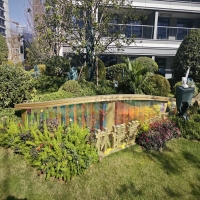Welcome to the website for landscape facilities products and knowledge.
What are the key differences between hand-forged and cast iron landscape chairs?
When selecting outdoor furniture, understanding the differences between hand-forged and cast iron landscape chairs is essential. Hand-forged iron chairs are crafted by skilled artisans, resulting in unique, intricate designs with superior durability. Each piece is individually shaped, offering a one-of-a-kind aesthetic. In contrast, cast iron chairs are mass-produced using molds, ensuring uniformity but often lacking the personalized touch of hand-forged items.
Durability is another key factor. Hand-forged chairs, made from wrought iron, are more resistant to bending and cracking due to their dense, hammered structure. Cast iron, while strong, is more brittle and prone to cracking under heavy impact. Additionally, hand-forged pieces typically feature smoother finishes with fewer seams, reducing rust risk over time.
Design flexibility favors hand-forging, as artisans can customize shapes and patterns. Cast iron chairs are limited to pre-designed molds, restricting creativity. However, cast iron is often more affordable due to streamlined production.
Ultimately, the choice depends on priorities: hand-forged chairs excel in craftsmanship and longevity, while cast iron offers cost-effective uniformity for outdoor spaces.
Related search:

Recommendation
Metal and acrylic color-changing combined curtain wall for large-scale public landscape facilities